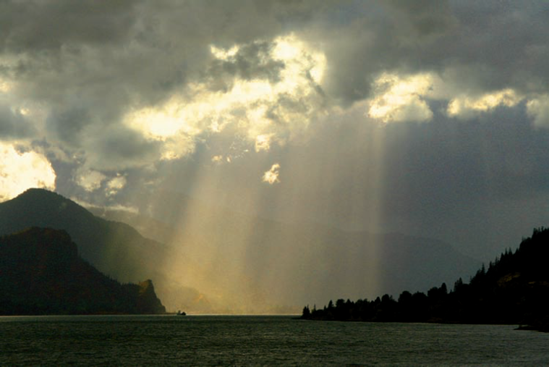Chapter 1. Understanding Light
Capturing light is the essence of photography. In fact, the name used to describe the craft, photography, is a combination of the Greek words photo meaning light and graphi meaning writing, so photography is fundamentally light writing. You use lenses and cameras and storage devices to capture those images that tell your visual stories and for many photographers, that's what photography is all about — the gear. I know I was certainly that way when I started my photography career. I thought photography was more about the gadgets than actually capturing light in all its many forms. Fortunately, at some point I began to see light in a new way and that shift has profoundly affected my photographic work and made it more fun. I want to share that shift in thinking with you, along with various practical ways for you to manage, manipulate, and expose the light.

Crepuscular rays of sunlight fall on the Columbia River in late afternoon in the Columbia Gorge. Lighting conditions of this quality can change in a heartbeat, so being ready to quickly change exposure settings ensures you get the shot. Exposure: ISO 200, f/10, 1/640 second.
What Is Light?
Light and its effects in photography can more easily be understood by making an analogy to painting. In this analogy, your digital sensor is the artist's canvas, the camera and lens combinations are the brushes, and the ...
Get Lighting Digital Field Guide now with the O’Reilly learning platform.
O’Reilly members experience books, live events, courses curated by job role, and more from O’Reilly and nearly 200 top publishers.

